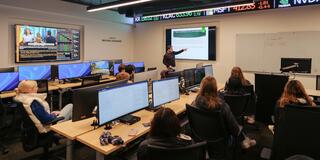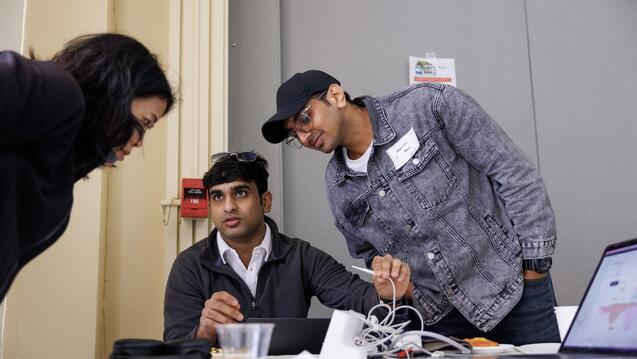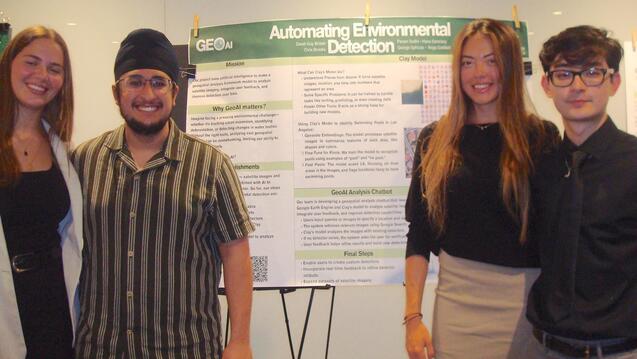Students Learn Investment by Investing

Curious about investing? Want to learn how money works? Thinking about a future in finance? Talk to Tim Rasmussen MBA ’13.
“For investing and finance, the investment lab is the place to be,” said Rasmussen, director of the Silk Investment Lab. “It’s the bridge from college to a career.”
The Silk Investment Lab in Malloy Hall holds 52 computers, including 11 Bloomberg terminals, Rasmussen said.
“Most universities have a few Bloomberg terminals, but they’re usually in the library. The fact that we have 11 is a lot and the fact that we have an entire room dedicated to investment is rare,” Rasmussen said. “Our lab, with its computers lined up and with its stock ticker display and with financial news playing on the TVs on the walls, places our students in an environment that very closely resembles a trading floor on Wall Street.”
The investment lab, part of the Silk Family Investment Institute, serves three audiences, Rasmussen said: finance majors, investment minors, and anyone else who is interested in business.
Alistair Ateshian ’25, a finance major, learned about the investment lab last fall when he took the Student-Managed Fund course taught by Ludwig Chincarini. In this course, students manage a $3 million university investment fund.
“This is real money, not hypothetical money,” Ateshian said. “Ludwig executes all the trades, but we use the lab to do all the financial and quantitative analysis. I’ve learned and grown more in that class than in any other class so far.”
Ateshian said the investment lab is his favorite place on campus. “I basically live there because I have class with Ludwig and afterwards I spend most of my hours at school there. I’ve built meaningful friendships there. It’s just a very welcoming community of like-minded people, all interested in finance and investing, where you can feed off each other’s energy.”
Samuel Simmons ’25, a computer science major, said he added an investment minor last fall after he met Rasmussen at an information session.
“I didn’t know an investment minor was a thing, but when I met Tim and saw how passionate he was about investing, and when he told me about quantitative investing and how it relates to computer science, I signed up,” Simmons said.
“If you’re interested in business and in investing and you’re majoring in economics or computer science or engineering or anything else related to math, I encourage you to minor in investing,” Chincarini said. “You’re also welcome if you’re a history major or any other major. In this world, with AI, jobs are going to be tough. Students need to add skills, like the skill of knowing how to invest.”
Ateshian said that while most students who hang out in the investment lab are finance majors or investment minors, some are from other majors. They learn about investing by talking with each other — and with Rasmussen. “He’s a good friend and adviser,” Ateshian said. “He tells us stories about his career.”
Before Rasmussen joined USF last summer, he was a vice president at Uphold, a digital asset trading company in New York City. He said these are just some of the jobs USF graduates can pursue if they major in finance or minor in investing: Financial analyst, asset manager, research analyst, investment banker, quantitative trader, financial planner, portfolio manager, wealth manager.
“I want to work in wealth management,” Ateshian said. “Everyone needs to know how to take control of their finances, and it doesn’t mean they’re rich, necessarily. It means they want to grow and protect whatever wealth they have.”


